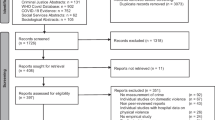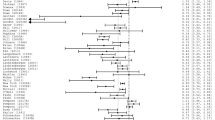Abstract
Pretrial reform efforts have facilitated earlier release of pretrial defendants, raising potential concerns about an increase in failure to appear (FTA) rates. Prior research has shown mixed, but generally positive, effectiveness of court notification strategies to reduce FTAs; however, to our knowledge, no study has examined this strategy for defendants released prior to charge filing. We conducted a retrospective, quasi-experimental investigation of the effectiveness of collecting contact information at the time of jail intake relative to practice as usual (i.e., court-based data collection and notification) on FTA outcomes. Participants were 527 pretrial defendants (205 intervention; 322 control) who received early release from jail between April 2018 through March 2019. Results showed jail-based notification was not associated with reduced likelihood of an FTA. However, the effect of jail-based notification on FTA was moderated by time to initial hearing, suggesting that jail-based collection of contact information may reduce FTA rates for initial hearings if the hearings are conducted in a reasonable timeframe following release. Our findings suggest a need for more research on court notification strategies overall and closer attention to the accessibility of notifications in the context of pretrial reform efforts.


Similar content being viewed by others
Data availability
Data are not publicly available due to participant privacy concerns. However, all statistical output files are available upon request.
Code availability
The authors used STATA to analyze the data. This code is available upon request.
References
Barno, M., Martínez, D. N., & Williams, K. R. (2019). Exploring alternatives to cash bail: An evaluation of Orange County’s Pretrial Assessment and Release Supervision (PARS) program. American Journal of Criminal Justice, 1–16,. https://doi.org/10.1007/s12103-019-09506-3
Bechtel, K., Lowenkamp, C. T., & Holsinger, A. (2011). Identifying the predictors of pretrial failure: A meta-analysis. Federal Probation, 75(2), 78.
Bohmert, M. N., Hoskins, K. M., & Morash, M. (2019). Tracking methods and retention for a longitudinal sample of alcohol- and drug-involved women on probation and parole. Journal of Community Psychology, 47(5), 1064–1077. https://doi.org/10.1002/jcop.22170
Bornstein, B. H., Tomkins, A. J., & Neeley, E. M. (2011). Reducing courts’ failure to appear rate: A procedural justice approach. U.S. Department of Justice.
Carson, E. A. (2020). Prisoners in 2019 (NCJ 255115; Prisoners Series). Bureau of Justice Statistics. https://bjs.ojp.gov/content/pub/pdf/p19.pdf
Clarke, S. H., Freeman, J. L., & Koch, G. G. (1976). The effectiveness of bail systems: An analysis of failure to appear in court and rearrest on bail.
Cohen, T., & Reaves, B. (2007). Pretrial release of felony defendants in state courts (NCJ 214994; p. 18). Bureau of Justice Statistics, Office of Justice Programs, U.S. Department of Justce.
Cooke, B., Diop, B. Z., Fishbane, A., Hayes, J., Ouss, A., & Shah, A. (2018). Using behavioral science to improve criminal justice outcomes: Preventing failures to appear in court. University of Chicago Crime Lab and ideas42. https://www.prisonpolicy.org/scans/Using_Behavioral_Science_to_Improve_Crimina_Justice_Outcomes_Cooke_et_al_2018.pdf
Cooprider, K., & Kerby, J. (1990). Practical application of electronic monitoring at the pretrial stage. Federal Probation, 54(1).
Copp, J. E., & Bales, W. D. (2018). Jails and local justice system reform: Overview and recommendations. The Future of Children, 28(1), 103–124.
Crozier, T. L. (2000). The court hearing reminder project: If you call them, they will come (p. 38). Institute for Court Management.
Desmarais, S. L., Zottola, S. A., Duhart Clarke, S. E., & Lowder, E. M. (2021). Predictive validity of pretrial risk assessments: A systematic review of the literature. Criminal Justice and Behavior, 48(4), 398–420. https://doi.org/10.1177/0093854820932959
Dobbie, W., Goldin, J., & Yang, C. S. (2018). The effects of pretrial detention on conviction, future crime, and employment: Evidence from randomly assigned judges. American Economic Review, 108(2), 201–240. https://doi.org/10.1257/aer.20161503
Elek, J., Sapia, S., & Keilitz, S. (2017). Use of court date reminder notices to improve court appearance rates. Pretrial Justice Center for Courts.
Fennessy, M., & Huss, M. T. (2013). Predicting success in a large sample of federal pretrial offenders: The influence of ethnicity. Criminal Justice and Behavior, 40(1), 40–56. https://doi.org/10.1177/0093854812459622
Ferri, R. (2019). Desk appearance tickets and the benefits of court date reminders. 6.
Goldkamp, J. S., & White, M. D. (2006). Restoring accountability in pretrial release: The Philadelphia pretrial release supervision experiments. Journal of Experimental Criminology, 2(2), 143–181. https://doi.org/10.1007/s11292-006-9001-1
Grommon, E., Ray, B., Sapp, D., & Thelin, R. (2017). Process evaluation of the IRAS-PAT pilot program implementation. Indiana University Public Policy Institute, Center for Criminal Justice Research. https://www.in.gov/publicdefender/files/IRAS-PAT_Report_Pr1%20(3).pdf
Howat, H., Forsyth, C. J., Biggar, R., & Howat, S. (2016). Improving court-appearance rates through court-date reminder phone calls. Criminal Justice Studies, 29(1), 77–87. https://doi.org/10.1080/1478601X.2015.1121875
IN Criminal Code Periods of Limitation, IC 35–41–4–2 (2020). http://iga.in.gov/legislative/laws/2020/ic/titles/035#35-41-4-2
Lattimore, P. K., Tueller, S., Levin-Rector, A., & Witwer, A. (2020). The Prevalence of Local Criminal Justice Practices., 83(1), 10.
Lowder, E. M., Diaz, C. L., Grommon, E., & Ray, B. R. (2020). Effects of pretrial risk assessments on release decisions and misconduct outcomes relative to practice as usual. Journal of Criminal Justice. https://doi.org/10.1016/j.jcrimjus.2020.101754
Lowder, E. M., & Foudray, C. M. A. (2021). Use of risk assessments in pretrial supervision decision-making and associated outcomes. Crime & Delinquency, 67(11), 1765–1791. https://doi.org/10.1177/00111287211022642
Lowder, E. M., Foudray, C. M. A., & McPherson, M. (2022). Proxy assessments and early pretrial release: Effects on criminal case and recidivism outcomes. Psychology, Public Policy, and Law. https://doi.org/10.1037/law0000341
Lowenkamp, C. T., Holsinger, A. M., & Dierks, T. (2018). Assessing the effects of court date notifications within pretrial case processing. American Journal of Criminal Justice, 43(2), 167–180. https://doi.org/10.1007/s12103-017-9393-7
Lowenkamp, C. T., & VanNostrand, M. (2013). Exploring the impact of supervision on pretrial outcomes. Laura and John Arnold Foundation. https://www.arnoldfoundation.org/wp-content/uploads/2014/02/LJAF_Report_Supervision_FNL.pdf
Lowenkamp, C. T., VanNostrand, M., & Holsinger, A. (2013). The hidden costs of pretrial detention. Laura and John Arnold Foundation. https://nicic.gov/hidden-costs-pretrial-detention
Maxwell, S. R. (1999). Examining the congruence between predictors of ror and failures to appear. Journal of Criminal Justice, 27(2), 127–141. https://doi.org/10.1016/S0047-2352(98)00052-X
Mood, C. (2010). Logistic regression: Why we cannot do what we think we can do, and what we can do about it. European Sociological Review, 26(1), 67–82. https://doi.org/10.1093/esr/jcp006
National Research Council. (2014). The growth of incarceration in the United States: Exploring causes and consequences (J. Travis, B. Western, & S. Redburn, Eds.; Vol. 52). The National Academies Press. http://choicereviews.org/review/https://doi.org/10.5860/CHOICE.185911
Nice, M. (2006). Court appearance notification system: Process and outcome evaluation. Local Public Safety Coordinating Council and the CANS Oversight Committee.
Ortiz, N. (2015). County jails at a crossroads: An examination of the jail population and pretrial release (NACo Why Counties Matter Paper Series, pp. 1–19) [Issue 2]. National Association of Counties. https://www.naco.org/sites/default/files/documents/Final%20paper_County%20Jails%20at%20a%20Crossroads_8.10.15.pdf
Pretrial Justice Institute. (2019). Scan of pretrial practices (No. 2019–10–02KN). https://university.pretrial.org/HigherLogic/System/DownloadDocumentFile.ashx?DocumentFileKey=b2bd6339-8201-60f4-c262-a6317a409b82&forceDialog=0
Rosenbaum, D., Hutsell, N., Tomkins, A. J., Bornstein, B. H., Herian, M. N., & Neeley, E. M. (2012). Using court date reminder postcards to reduce courts’ failure to appear rates: A benefit-cost analysis. Judicature, 95, 177–187.
Sacks, M., & Ackerman, A. R. (2014). Bail and sentencing: Does pretrial detention lead to harsher punishment? Criminal Justice Policy Review, 25(1), 59–77. https://doi.org/10.1177/0887403412461501
Sawyer, W., & Wagner, P. (2020). Mass incarceration: The whole pie 2020. The Prison Policy Initiative. https://www.prisonpolicy.org/reports/pie2020.html
Schnacke, T. R., Jones, M. R., & Wilderman, D. M. (2012). Increasing court- appearance rates and other benefits of live-caller telephone court-date reminders: The Jefferson County, Colorado, FTA pilot project and resulting court date notification program. Court Review: The Journal of the American Judges Association.
StataCorp. (2019). Stata Statistical Software: Release 16 (Version 16) [Computer software]. StataCorp LLC.
Stevenson, M. T. (2018). Assessing risk assessment in action. Minnesota Law Review, 58, 303–384. https://doi.org/10.2139/ssrn.3016088
Stuart, E. A., King, G., Imai, K., & Ho, D. (2011). MatchIt: Nonparametric preprocessing for parametric causal inference. Journal of Statistical Software. https://doi.org/10.18637/jss.v042.i08
Tomkins, A. J., Barnstein, B., Herian, M. N., & Rosenbaum, D. I. (2012). An experiment in the law: Studying a technique to reduce failure to appear in court. Court Review, 48(3), 96–107.
U.S. Department of Justice. (2021). National Incident-Based Reporting System user manual. U.S. Department of Justice, Federal Bureau of Investigation, Criminal Justice Information Services Division.
VanNostrand, M., & Keebler, G. (2009). Pretrial risk assessment in the federal court. Fed. Probation, 73, 3.
VanNostrand, W. M., Rose, K. J., & Weibrecht, K. (2011). State of the science of pretrial release recommendations and supervision (pp. 1–46). Pretrial Justice Institute.
Viljoen, J. L., Jonnson, M. R., Cochrane, D. M., & Vincent, G. M. (2019). Impact of risk assessment instruments on rates of pretrial detention, postconviction placements, and release: A systematic review and meta-analysis. Law and Human Behavior, 43(5), 397–420.
Walmsley, R. (2018). World Prison Population List (p. 19). Institute for Crime & Justice Policy Research.
White, W. F. (2006). Court hearing call notification project. 9.
Wong, T. (2009). Validation of the state of Hawaii LSI-R Proxy (p. 9). Interagency Council on Intermediate Sanctions.
Zeng, Z., & Minton, T. D. (2021). Jail inmates in 2019 (NCJ 255608; Prison and Jail Inmates at Midyear). Bureau of Justice Statistics. https://bjs.ojp.gov/content/pub/pdf/ji19.pdf
Zettler, H. R., & Morris, R. G. (2015). An exploratory assessment of race and gender-specific predictors of failure to appear in court among defendants released via a pretrial services agency. Criminal Justice Review, 40(4), 417–430. https://doi.org/10.1177/0734016815583350
Funding
The research leading to these results received funding from George Mason University’s College of Humanities and Social Sciences.
Author information
Authors and Affiliations
Contributions
Evan M. Lowder and Chelsea M.A. Foudray led the study conception and design. Material preparation, data collection, and analysis were performed by Chelsea M.A. Foudray and Evan M. Lowder. The first draft of the manuscript was written by Chelsea M.A. Foudray, Spencer G. Lawson, and Evan M. Lowder. All authors commented on previous versions of the manuscript. All authors read and approved the final manuscript.
Corresponding author
Ethics declarations
Conflicts of Interest
The authors have no conflicts of interest to declare.
Ethics Approval
Approval was obtained from the Institutional Review Board of George Mason University. The procedures used in this study adhere to the tenets of the Declaration of Helsinki.
Consent to Participate
Not Applicable.
Consent for Publication
Not applicable.
Additional information
Publisher's Note
Springer Nature remains neutral with regard to jurisdictional claims in published maps and institutional affiliations.
Rights and permissions
About this article
Cite this article
Foudray, C.M.A., Lawson, S.G. & Lowder, E.M. Jail-Based Court Notifications to Improve Appearance Rates Following Early Pretrial Release. Am J Crim Just 48, 656–676 (2023). https://doi.org/10.1007/s12103-022-09676-7
Received:
Accepted:
Published:
Issue Date:
DOI: https://doi.org/10.1007/s12103-022-09676-7




